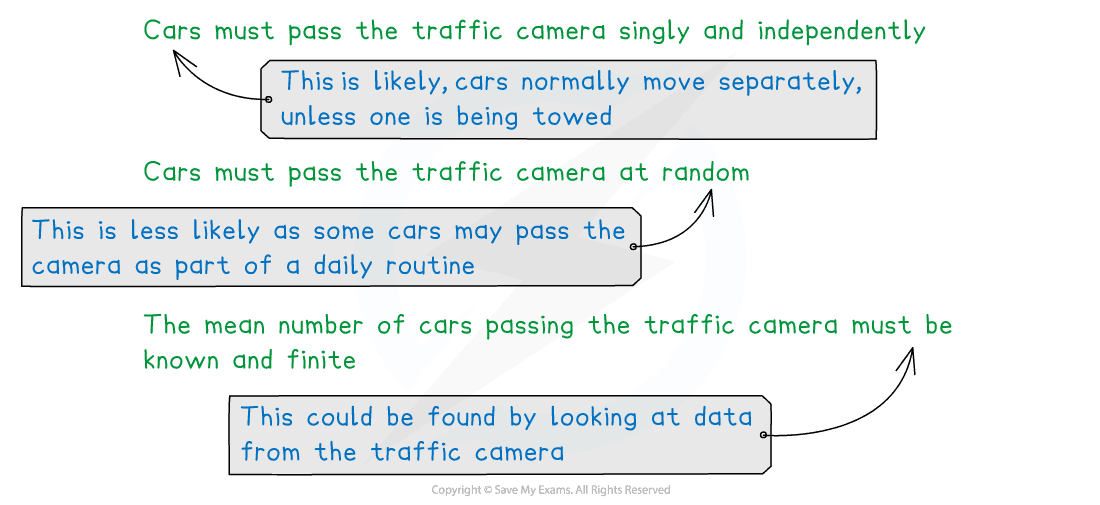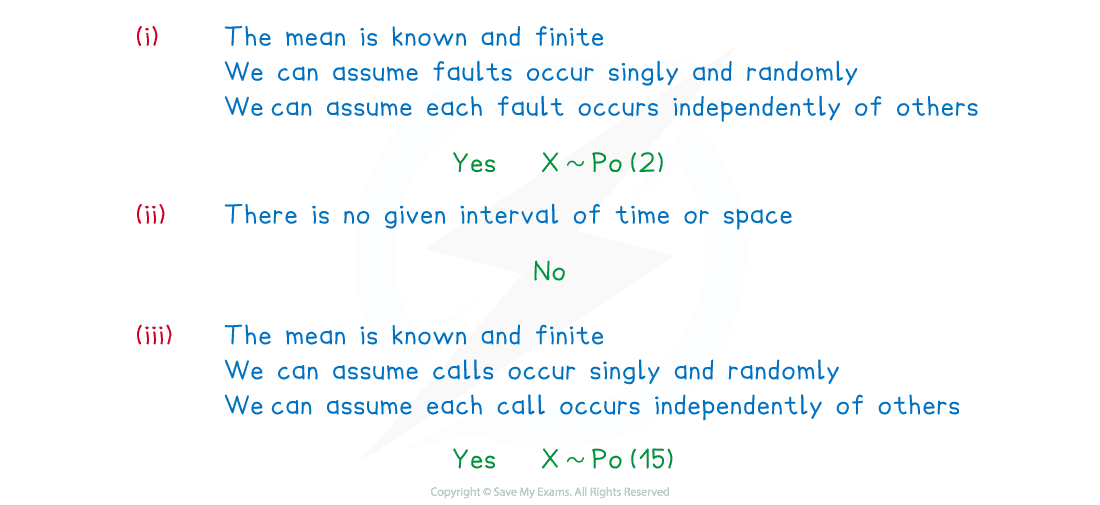The Poisson Distribution (Edexcel International A Level (IAL) Maths): Revision Note
Exam code: YMA01
Did this video help you?
Properties of Poisson Distribution
What is a Poisson distribution?
A Poisson distribution is a discrete probability distribution
The discrete random variable X follows a Poisson distribution if it counts the number of events that occur at random in a given time or space
For a Poisson distribution to be valid it must satisfy the following properties:
Events occur singly and at random in a given interval of time or space
The mean number of occurrences in the given interval(λ) is known and finite
λ has to be positive but does not have to be an integer
Each occurrence is independent of the other occurrences
If X follows a Poisson distribution then it is denoted
λ is the mean number of occurrences of the event
The formula for the probability of r occurrences in a given interval is:
for r=0, 1, 2, ...,n
e is the constant 2.718…
What are the important properties of a Poisson distribution?
The mean and variance of a Poisson distribution are roughly equal
The distribution can be represented visually using a vertical line graph
If λ is close to 0 then the graph has a tail to the right (positive skew)
If λ is at least 5 then the graph is roughly symmetrical
The Poisson distribution becomes more symmetrical as the value of the mean (λ) increases

Worked Example
is the random variable ‘The number of cars that pass a traffic camera per day’. State the conditions that would need to be met for
to follow a Poisson distribution.
Answer:

Did this video help you?
Modelling with Poisson Distribution
How do I set up a Poisson model?
Find the mean and variance and check that they are roughly equal
You may have to change the mean depending on the given time/space interval
Make sure you clearly state what your random variable is
For example, let X be the number of typing errors per page in an academic article
Identify what probability you are looking for
What can be modelled using a Poisson distribution?
Anything that occurs singly and randomly in a given interval of time or space and satisfies the conditions
For example, let X be the random variable 'the number of emails that arrive into your inbox per day'
There is a given interval of a day, this is an example of an interval of time
We can assume the emails arrive into your inbox at random
We can assume each email is independent of the other emails
This is something that you would have to consider before using the Poisson distribution as a model
If you know the mean number of emails per day a Poisson distribution can be used
Sometimes the given interval will be for space
For example, the number of daisies that exist on a square metre of grass
look carefully at the units given as you may have to change them when calculating probabilities
Worked Example
State, with reasons, whether the following can be modelled using a Poisson distribution and if so write the distribution.
(i) Faults occur in a length of cloth at a mean rate of 2 per metre.
(ii) On average 4% of a certain population has green eyes.
(iii) An emergency service company receives, on average, 15 calls per hour.
Answer:

Examiner Tips and Tricks
If you are asked to criticise a Poisson model always consider whether the trials are independent, this is usually the one that stops a variable from following a Poisson distribution!

Unlock more, it's free!
Did this page help you?